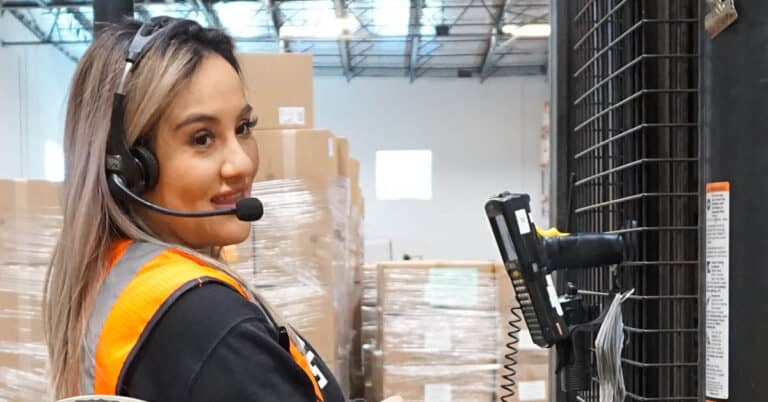
There are some things that you can only learn when working on the warehouse floor. I have come to find this out firsthand. My name is Jeremy Hobson, and I am an application engineer here at AccuSpeechMobile. I work directly with our customers to provide compelling proof of concepts, and to provide the initial setup and continued support for our voice and automation at their sites. Through this experience, one thing that has become clear to me is that the best way to improve a system is to talk to the people who use it. These experts will always be the ones to know how it can improve.
Every site that we visit is unique in the way that they do things. Even when one company has multiple sites, each of them will be different from each other. They all have their own workflows and intricacies that are specialized to them. One of the unique things about AccuSpeechMobile is that we preserve these details. Unless there is room for improvement, we do not need to change anything about the existing workflows to implement our voice and automation solution. Our software resides on the device and does not require any additional connections to an external server. We directly interact with the front-end client that you are using today. This enables us to input data and depress keys, either by custom voice commands or by specialized automation. We work with you to get your workflows as simple and efficient as possible, while reducing errors at the same time.
One of the biggest struggles that we face is the preconception that we work the same way as solutions that are similar to ours. Sometimes, this is due to prospective customers having worked with our competitors previously. Other times, they simply just cannot believe that our solution can work with, and even improve the system and workflows that they have used for years. All this changes when we demonstrate exactly how possible it is during an in-house proof of concept. Did I mention that it takes only two days for us to get a working proof of concept on your system?
It is very common for us when learning a customer’s workflow to find deprecated or unnecessary steps that they have grown used to. Maybe changing the backend system is difficult or even impossible. Maybe they use the same system throughout the company, but different locations do not need to input data in certain fields. In these scenarios, they instead will train their users how to get around these tedious data fields or screens with the explanation of “we don’t really use that,” or “that’s just how you have to do it.” We find these unnecessary steps and completely automate them, so that the user does not ever have to interact with them.
Here is a very simple example that shows what we mean. Let us say that a company has three warehouses, #101, #102, and #103. The backend system used must stay identical throughout the three warehouses. When a user logs in, they have an input field to identify the warehouse in which they are currently working. While it may be possible that a user occasionally will cover the shift of someone at a different warehouse, they are almost always going to be in the same warehouse when logging on. Every day, this user will have to type “101” into the login screen. With our customized automation, we can make it so that right when this field needs its input, our software automatically inputs “101” and hits enter. This happens so quickly that the user will not even notice that it took place. Since our voice software and scripts run on the device, the script entering “101” could be unique to the devices in warehouse #101, with the scripts at the other two warehouses programmed to enter their respective warehouse numbers.
To further expound on this example, let us say that this company has many different customers, two of which are customer A and customer B. Customer A requires that the pallets are limited to being only four cases tall. Customer B requires the case’s labels to be facing outwards when stacked on the pallet. These requirements may change, and new customers have their own specifications that need to be followed. Rather than adding new information to fill up screens on the backend system, our automation can recognize the customer on the field and speak these specifications to the users. When the specifications change, or new customers are added, modifying the automation not only can be done in one day, but it usually takes less than an hour. This customization and adaptability are what separates AccuSpeechMobile from other voice and automation solutions.
With voice, we enhance the user experience by making the workflows more intuitive and natural, but by removing these extra steps with our automation, we make everything faster. Users can focus more on the task at hand rather than looking at the screen and pressing unnecessary keys. The productivity in the warehouse is increased and the number of errors and simple mistakes is reduced dramatically. Everyone has something to love about our solution, whether they are a user, a manager, an auditor, etc. It is a win for the whole warehouse.
Most of our success lies within the fact that we are not going to change your system, but that we can improve upon what you already have. We can change as little or as much as necessary to make your workflows as efficient as possible, while minimizing the amount of retraining you will have to do. When our customers hear that we can add voice to their systems, that sparks interest. However, when they see how we can automate their own system, that sparks excitement.